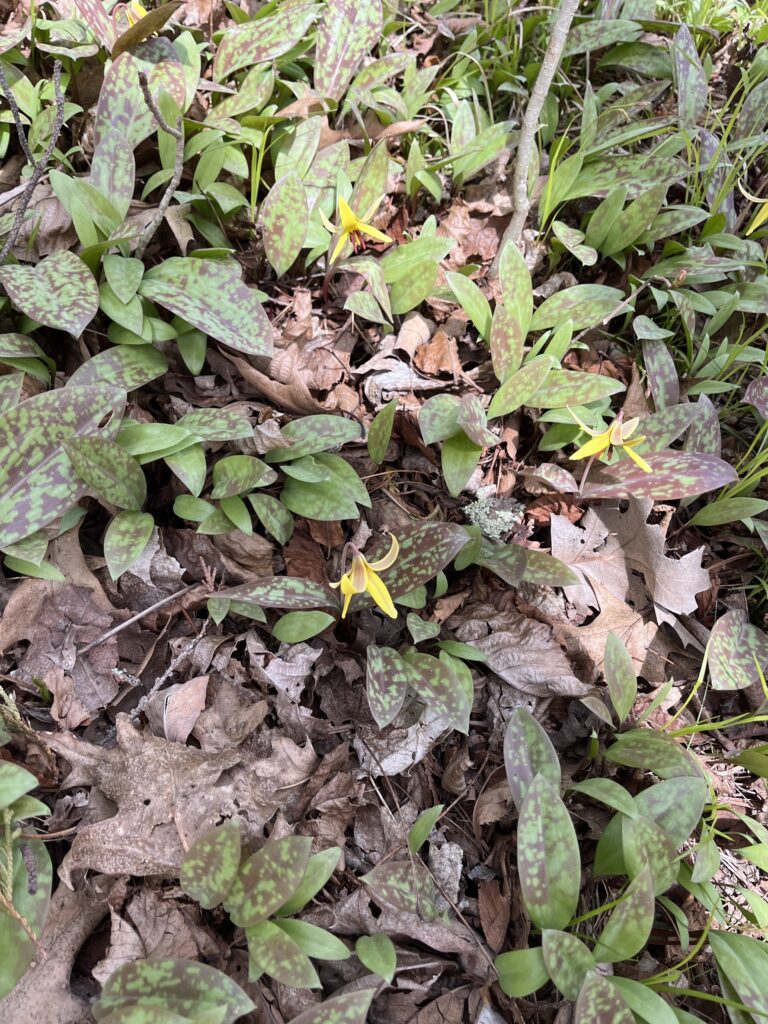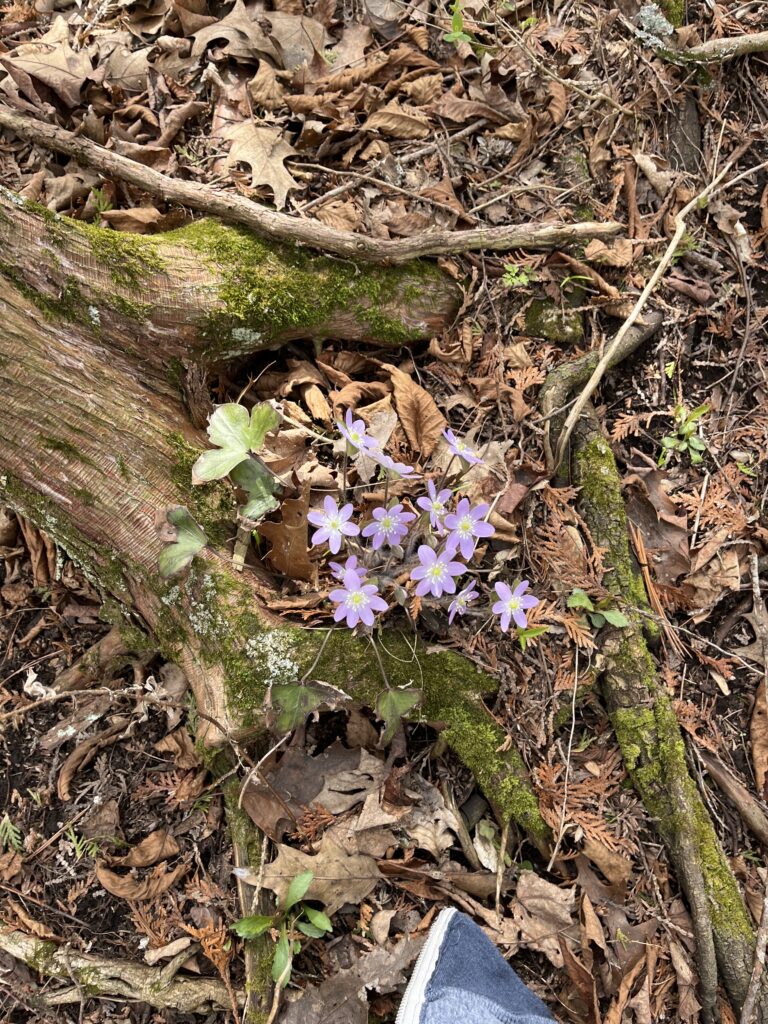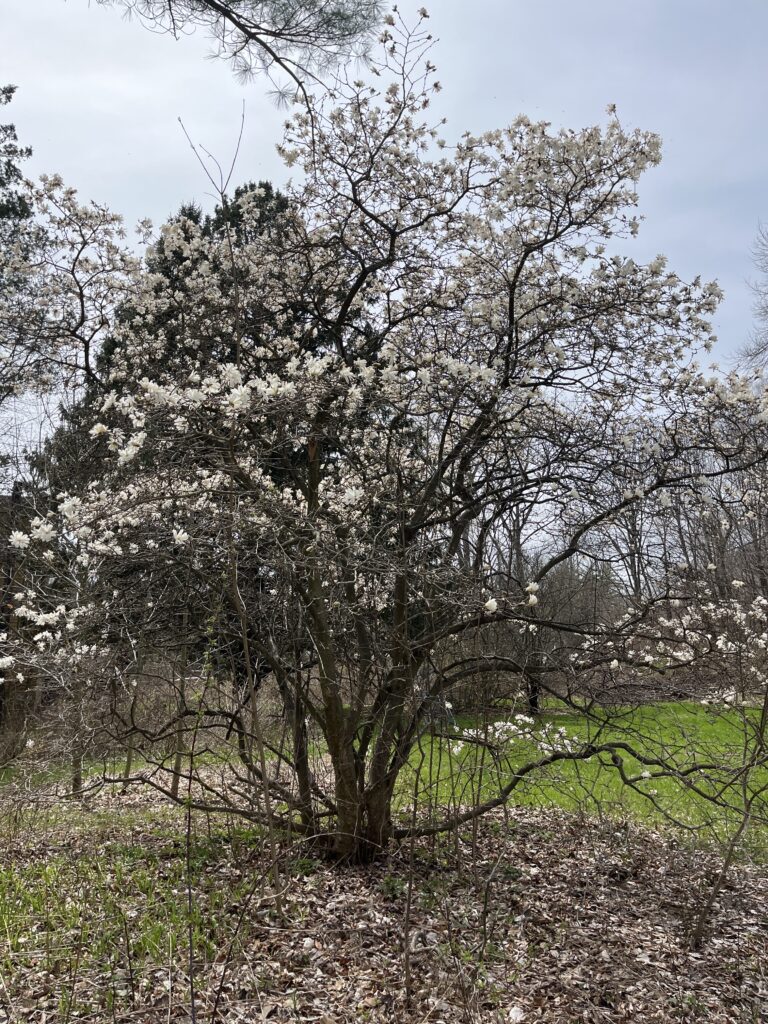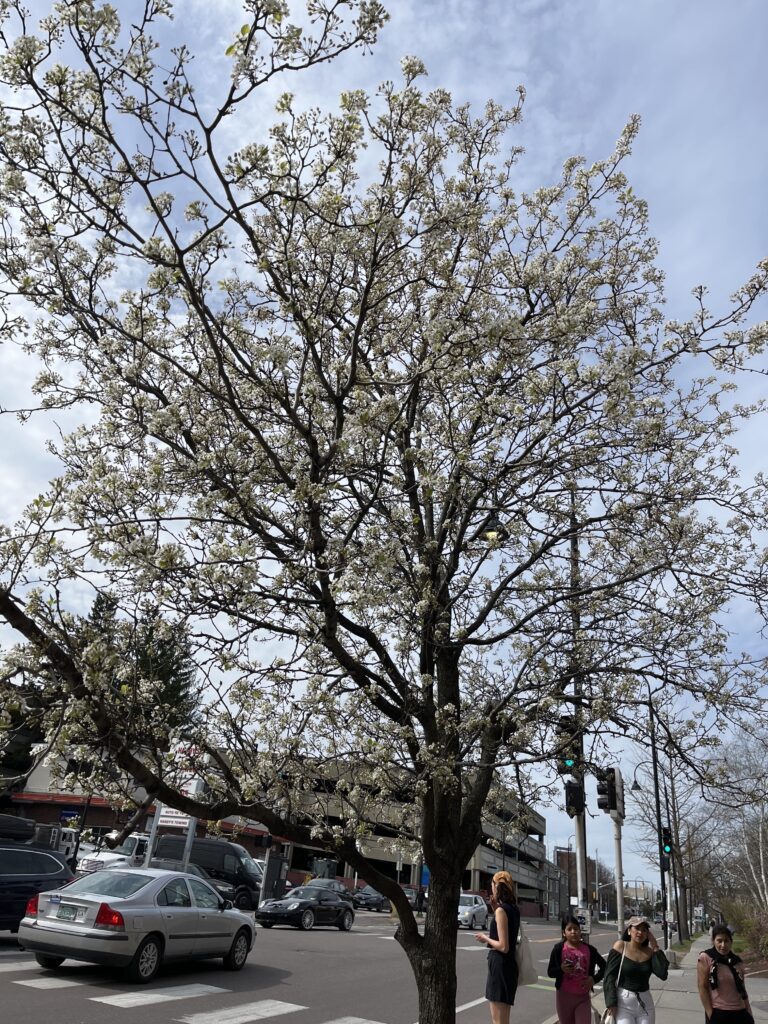A group of friends and I dedicated most of yesterday (4/27) to exploring Burlington and logging observations in iNaturalist. We covered all of Rock Point and part of North Beach, as well as logging urban nature in Downtown Burlington. It was a lovely day, pretty warm even with the clouds and wind, and we were all glad to get outside with the excuse of working on an assignment in our busy schedules of the last couple of weeks of school.
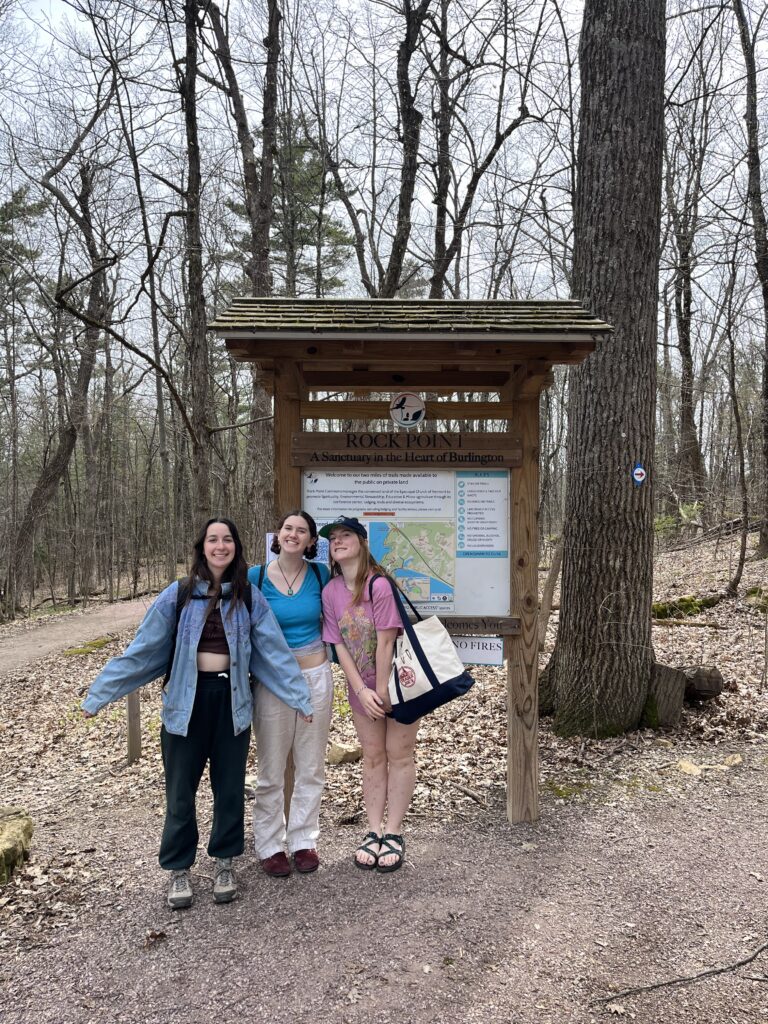
We divided and conquered: I logged the plants (trees, shrubs, and flowers, many having started blooming in the past few days), one friend the signs of animals (mostly dogs), and a third the birds we saw and heard. I was very impressed with iNaturalist’s ability to pretty accurately suggest potential species identifications, having limited knowledge myself of anything but the focal tree and mammal species we’d covered in class. From the suggestions, I was able to easily narrow it down to one species by the details I observed (ex. sharp vs. rounded petals). The same goes for Merlin, the bird identification app, which my friend had downloaded- it was able to pick up the most distant twitters I hadn’t even noticed. Between the 3 of us, we logged 27 species of birds, trees, flowering plants, ferns/shrubs, and land-dwelling wildlife. My favorite flower we spotted that I was unfamiliar with was the Yellow Trout Lily, which grew in beds of interestingly patterned leaves and yellow blossoms (pictured below!).
Looking at City Nature Challenge iNaturalist databases in other participating cities, I was blown away by just how many submissions there were- 77,642, last I checked. I hadn’t even thought to log the bugs I encountered, and there were a few, but there were plenty of bugs in the database. The bulk of submissions does seem to be plants, a good amount being flowers due to their charismatic nature I assume. It was also much harder to capture clear photos of animals and bugs, which probably contribute to how many of each family are logged: it would be interesting comparing the logged ratios to the real makeup of a natural space, if that’s possible to quantify. This makes me curious how scientists account for the skewed tallies when using iNaturalist data for moving species which will naturally be harder to capture and/or identify.
